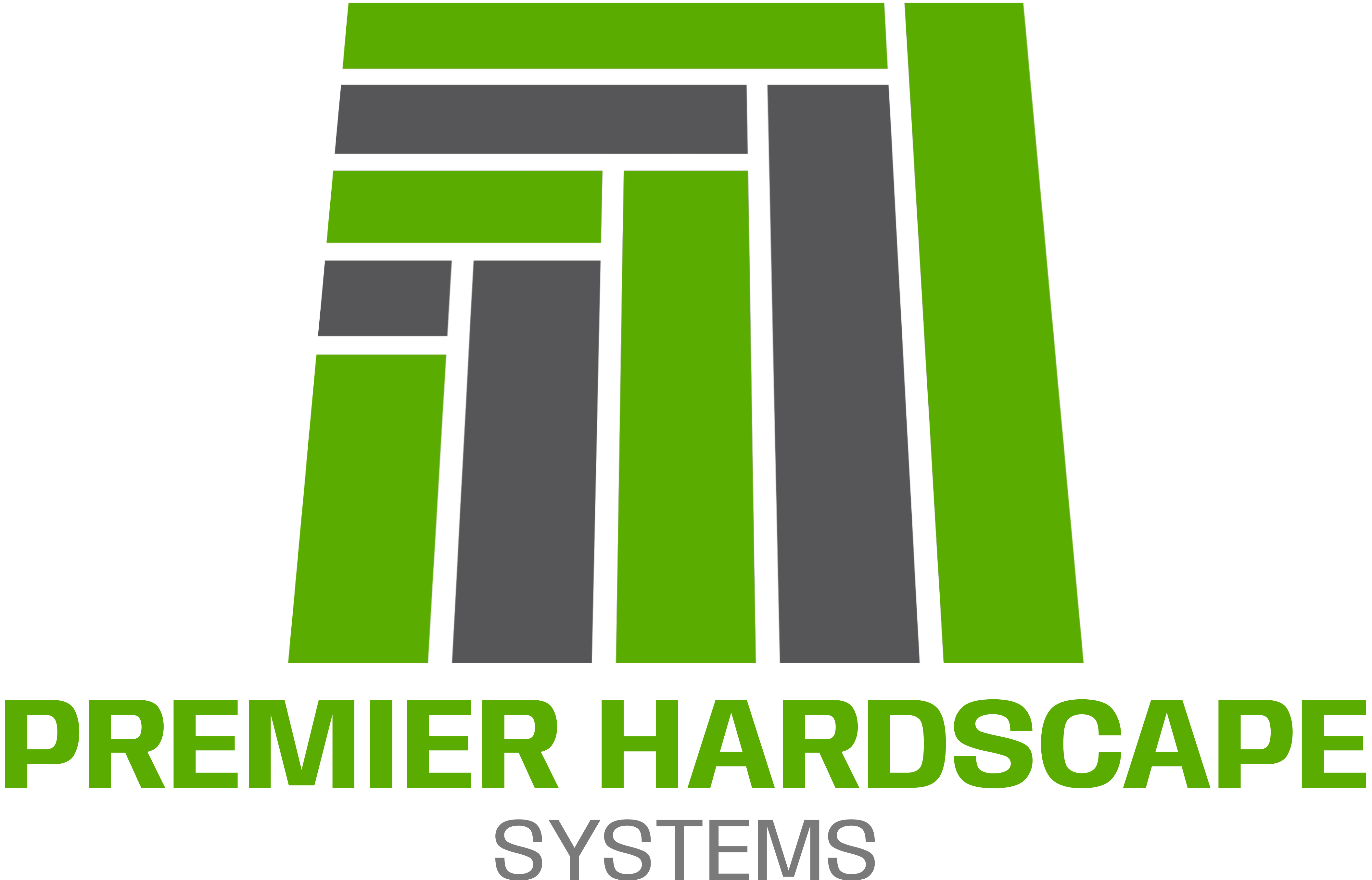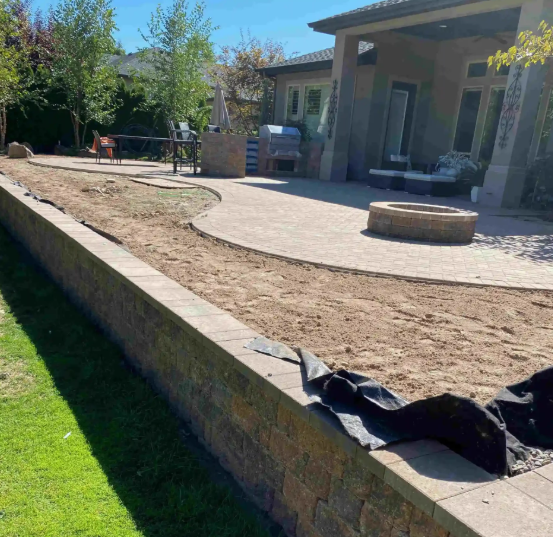Retaining walls that last decades
Retaining walls in Boise ID can fail quickly without proper base preparation, drainage, and compacted backfill to hold their structure.
A homeowner in Boise watches as their newly built retaining wall starts to bow outward only a year after construction. Cracks begin to form, and sections of the wall seem to tilt more with each passing season. They wonder how something that looked so solid is now failing, and what could have been done to prevent it.
Retaining walls are more than just structural landscaping elements. When engineered and installed correctly, they provide soil retention, prevent erosion, and add usable space to sloped properties. But when built poorly, they can crack, lean, or completely collapse, leading to costly repairs and potential safety hazards.
At the heart of a stable retaining wall lies what’s often invisible to the homeowner: the base and drainage system. These are not aesthetic choices, they’re engineering requirements. And when they’re done right, your wall stands firm for decades.
The Hidden Forces Behind Wall Failure
Retaining walls hold back tons of soil. Add moisture, frost heave, and pressure from poorly compacted backfill, and it becomes clear why walls fail when shortcuts are taken. In Boise’s four-season climate, with freeze-thaw cycles and seasonal downpours, drainage is not optional. It’s critical.
Two primary forces compromise retaining walls:
- Hydrostatic Pressure: Water trapped behind the wall creates pressure. Without drainage, this force increases and pushes against the structure until it cracks or leans.
- Poor Base Preparation: A weak or unlevel base cannot support the wall’s weight and the soil it retains. Over time, sections of the wall may settle unevenly and begin to shift or fail.
These problems are entirely preventable, but only with proper construction techniques.
The Foundation of a Long-Lasting Wall: Base Preparation
The first and most critical step in building a stable retaining wall is preparing the base. This means more than digging a trench and pouring gravel. It’s a multi-step process that must be done with precision.
- Excavation Depth: In Boise, frost depths average 24 inches. To prevent heaving, the base must be dug below this depth when applicable or to at least 6 inches for smaller residential walls.
- Base Material: A compacted layer of crushed gravel (not pea gravel or soil) forms the foundation. This gravel must be angular and free-draining, allowing water to move away rather than pool beneath the structure.
- Compaction: A vibratory plate compactor is used in layers, ensuring the base is dense and level. Without this, settling will occur and undermine the wall’s structural integrity.
- Leveling: A laser level or builder’s level ensures that the base is perfectly flat. Even a slight slope can cause long-term wall failure.
The Drainage System: Your Wall’s Safety Valve
Drainage is often the most overlooked component of a retaining wall, but it’s also the most important. Without a well-planned drainage system, water builds up behind the wall and dramatically increases pressure.
Key Components of an Effective Drainage System:
- Perforated Drain Pipe: Installed behind the wall at the base, this pipe collects and redirects groundwater away from the wall. It must be wrapped in a filter fabric to prevent clogging with soil.
- Gravel Backfill: Behind the wall, gravel allows water to filter down to the pipe instead of collecting behind the wall face. At least 12 inches of gravel is recommended behind the full height of the wall.
- Weep Holes: These small openings at the bottom of some walls allow water to escape. In systems without drain pipes, weep holes act as the only release mechanism for trapped water.
- Filter Fabric: A geotextile layer between the soil and gravel prevents soil migration into the drainage zone, maintaining long-term function.
Each of these elements works together to ensure water moves through and away from the wall rather than building up behind it.
Why Compaction and Layering Matter
Another frequent failure point is improper backfill. After each course of the wall is set, gravel should be backfilled in layers no more than 8 inches deep, with each layer compacted. This process prevents air pockets, settling, and lateral movement.
Soil should never be used as primary backfill material. It retains water and swells, creating pressure against the wall. Gravel, on the other hand, drains quickly and maintains structure.
Building to Last in Boise, ID
In Boise, retaining walls must withstand temperature swings, rainfall, and expanding clay soils. These environmental pressures mean any shortcut, whether in drainage or base prep, almost guarantees failure within a few seasons.
Additionally, walls over four feet in height often require engineering approval and permits per Boise City Code. For these, calculations on soil type, surcharge (extra load above the wall), and water management must be factored into the design.
Why Our Walls Don’t Fail
At Premier Hardscape Systems, we don’t build shortcuts. We build retaining walls that last a lifetime because we understand that beauty means nothing without integrity.
Every wall we construct begins with thorough site evaluation. We analyze slope, soil type, and water flow. Then we excavate and install a deep, compacted gravel base. We add professional-grade drainage systems that redirect water and relieve pressure. And we backfill with precision in layered lifts, compacted every step of the way.
We don’t rely on guesswork or visual alignment. Our crews use laser levels, proper geotextiles, and retaining wall blocks engineered for strength and longevity.
When we finish a job, the wall isn’t just standing, it’s engineered to stand for decades.
FAQs: Retaining Walls
What causes retaining walls to lean or collapse?
The most common causes are poor drainage, inadequate base preparation, and improper backfill. These factors create pressure and instability, eventually causing the wall to fail.
Do all retaining walls need drainage?
Yes. Even small walls benefit from proper drainage. Without it, water pressure can build behind the wall and lead to structural damage.
How do I know if a retaining wall is built correctly?
Check for signs like a level base, clean gravel backfill, and weep holes or drainage pipes. Professional installers will provide a clear explanation of what lies behind the wall, not just what you see.
Is a permit required for my retaining wall in Boise?
In most cases, walls over four feet tall require a permit and possibly an engineered design. Always check with the City of Boise Planning & Development Services or ask your contractor.
How long should a professionally built retaining wall last?
With proper engineering and materials, a retaining wall can last 50 years or more. The key is drainage, compaction, and a solid base.
The most beautiful retaining wall means nothing if it starts to crack or lean within a year. What ensures long-term performance is what lies beneath and behind it, well-compacted bases, professional-grade drainage, and proper backfill methods. These components may be invisible, but they’re essential.
At Premier Hardscape Systems, we build retaining walls in Boise, ID that are designed to stand the test of time. We never cut corners and always put engineering first. If you want a retaining wall that doesn’t just look good today but performs for decades, we’re the team to call.
Let’s make your outdoor space safer, stronger, and more beautiful, with no hidden problems down the road.
Top Boise Idaho Hardscaping and Landscaping Services
Providing Boise Idaho and surrounding areas with hardscape and landscaping services with over 2 decades of experience. When you want the very best, contact Premier Hardscape Systems, 208-286-5197.

